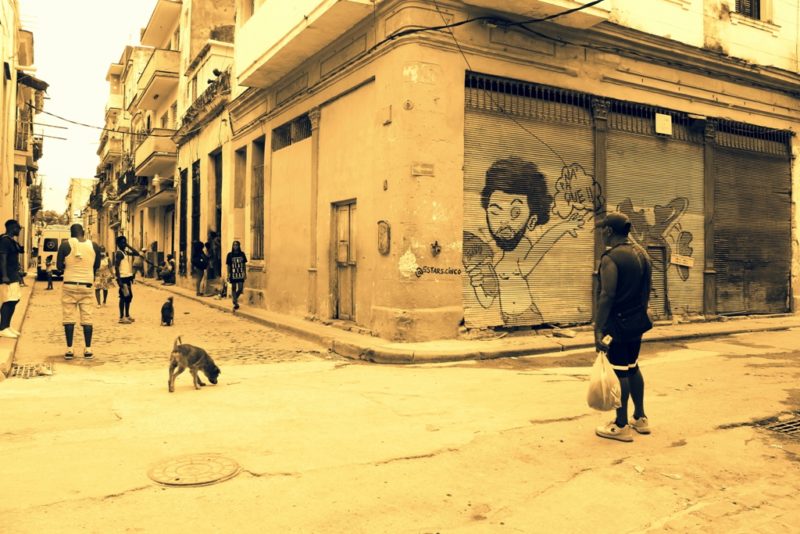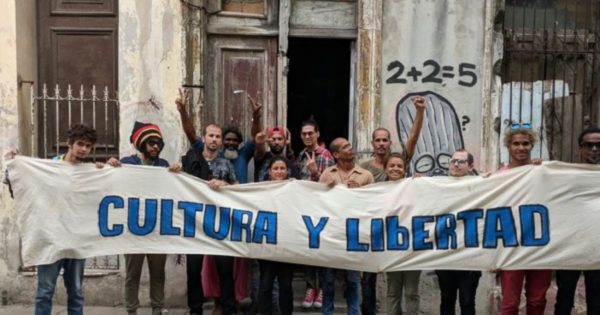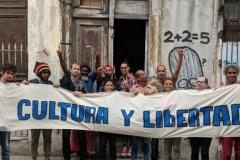Retracing the Old Havana Neighborhood of San Isidro

Photo Feature by Ernesto Gonzalez Diaz
HAVANA TIMES – The San Isidro neighborhood is located to the east of the Old Havana municipality, between the train terminal and the Alameda de Paula. It is the neighborhood where Jose Marti, considered the most universal of all Cubans, was born. The neighborhood that, in the first two decades of the 20th century, became the center of Havana’s prostitution, a lucrative business that involved French and Cuban pimps and where there were regular clients, including politicians and high-ranking Mambises during the early years of the so-called republic.
Just around that time, what became known as the war of zippers took place between the French pimp Louis Lotot and the Cuban Alberto Yarini, which ended with the death of both of them and the exaltation of Yarini as a “national hero”, because for the first time in Cuba, a Cuban faced and defeated a foreign power.
As a curious fact, San Isidro houses one of the three Jewish synagogues in Havana. In the 1930s and 40s many Jews, mostly Sephardic Jews, settled in the neighborhood when they arrived in Cuba fleeing Nazism in Europe. They set up their businesses and prospered a lot until 1959 when the majority decided to emigrate to the United States due to the expropriation of their businesses.
Today it is a neighborhood of humble, simple people, a neighborhood in which very poor tenements coexist with rentals for foreigners who arrive in luxurious cars to get to know the Cuban people first-hand. You can also see churches and squares from the time of Spain, beautifully preserved and clean, contrasting with the contemporary touch provided by the large amount of graffiti and street murals; in short, a neighborhood where the pulse of today’s Cuba is palpable.

In this neighborhood, the MSI (San Isidro Movement) emerged in 2018, a political-cultural project, led by the plastic and performance artist Luis Manuel Otero and made up of other artists and young intellectuals. The group’s purpose is to express their ideas and positions through art and culture. Unfortunately, since its inception, it has suffered strong harassment by various state institutions and pro-Communist Party organizations.
Likewise, the official press has mounted a whole campaign of discredit and disrepute towards these young people, describing them as “common criminals and mercenaries at the service of the empire”, causing many to have had to emigrate. Others, such as Luis Manuel Otero and Maykel Castillo, were tried just a few days ago and sentenced to 5 and 7 years in prison, in a trial without transparency and rather farfetched, for the crimes of contempt, attack and offense against patriotic symbols. I hope that sooner rather than later this process can be reversed and these young people go free and continue developing their artistic and cultural projects without being harassed or persecuted.







Thanks for this excellent article Ernesto. As a frequent visitor to Cuba, it is always good to learn more and see more images of fascinating Havana. It was Important that you also provided an update on the Sam Isidro protesters and their unjust prison sentences. José Marti emphasized that it was the duty of every citizen to protest constructively and so it is sad to see the government violating his teachings and principles. We must ask “Is Marti the mentor of Cuba, or not? “ If he is, then protest must be tolerated as long as it is constructive and lessons learned from the protest.
Thanks for this excellent article Ernesto. As a frequent visitor to Cuba, it is always good to learn more and see more images of fascinating Havana. It was Important that you also provided an update on the Sam Isidro protesters and their unjust prison sentences. José Marti emphasized that it was the duty of every citizen to protest constructively and so it is sad to see the government violating his teachings and principles. We must ask “Is Marti the mentor of Cuba, or not? If he is, then protest must be tolerated as long as it is constructive and lessons learned from the protest.
It was also